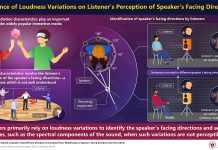
In a significant advancement for quantum computing, researchers at the University of Massachusetts Amherst, along with their colleagues from the University of Chicago, have developed a new device that promises to revolutionize how quantum computers operate.
This device, a modified microwave circulator, plays a crucial role in managing the flow of quantum information, a fundamental aspect of quantum technology.
Unlike traditional computers, which use bits as the basic unit of information, quantum computers use “quantum bits” or “qubits.”
These qubits can exist in multiple states simultaneously, thanks to a phenomenon known as “quantum superposition.”
This ability allows quantum computers to process vast amounts of information at incredible speeds, far surpassing the capabilities of today’s most powerful supercomputers.
One of the novel aspects of this research is the focus on “nonreciprocity” in quantum computing. Nonreciprocity refers to the unequal sharing of information between two points.
In practical terms, it means that the device can control how much data is shared without risking unauthorized changes to it.
This is particularly valuable in quantum computing, where protecting the integrity of data is crucial.
The research team, led by UMass Amherst’s physics graduate student Ying-Ying Wang, first used computer simulations to design their device.
They then built it and conducted experiments to confirm their design worked as expected.
Their device, shaped like a “Y,” includes a central circulator that acts like a traffic roundabout, directing the flow of microwave signals that interact with the quantum bits.
Through their experiments, the researchers were able to adjust the device to control the degree of nonreciprocity.
This precise control is critical for the reliable operation of quantum computers, as it ensures that data can be accessed as needed without being corrupted or altered.
The team also simplified their initial complex model, which had 16 parameters, down to a more general, six-parameter model. This simplification makes it easier for other researchers to use and adapt their work, potentially accelerating further developments in quantum computing technology.
Sean van Geldern, a UMass Amherst physics graduate student and co-author of the study, likened nonreciprocity to a conversation where one person shares less information than the other. This analogy helps illustrate the selective control over data flow in their quantum computing device.
This breakthrough not only enhances the performance of quantum computers but also opens the door to more sophisticated quantum computing hardware.
The study, published in Science Advances, marks a pivotal step forward in the quest to harness the full potential of quantum computing.



